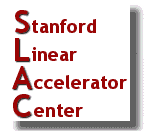 Desktop Trouble Call Help Model
Desktop Trouble Call Help Model 
22 April 2003
The following are the reasons for SLAC's desktop trouble call help model:
- SCS cannot possibly take care of day-to-day crisis for more than 1600 NT and
250 Linux desktop computers. The SCS Desktop Support and Windows Infrastructure
group is only several people who must deal with server-side and central services.
Having the 50 department computer support personnel take the first-line
troublecall before forwarding to SCS makes the day-to-day work manageable,
and establishes an on-going working relationship
.
- Client-side troublecalls are best understood by local department computer support
people. Even when SCS helps out in crisis, we do not want to bypass the department
computer support person. We would prefer to be contacted and directed by the department
support person, and not by users if possible. If we leave the department support person
out of the loop, this just undermines the communications between the local support person
and the on-going support he/she is expected to give to the department.
We will back up the department computer support person with client-side troublecall
support. But if the help is more than casual, the department will be charged back for the
hours of work.
When the department computer support person is not available for crisis troublecalls,
the user can ask SCS and the Help Desk to send in the backup client-side help that SCS can
offer. This model is based on departments providing enough resources and support for their
department computer support personnel to be the first-line troubleshooting and support for
local desktop computers, and be point-of-contact to SCS. This provides support for
distributed computing via a distributed support model.
Owner: Desktop-Admin
Feedback
Author: Andrea Chan

